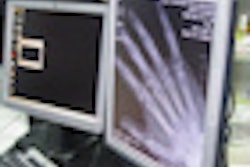Many radiology practices make use of radiologist assistants (RAs) as physician extenders, making workloads and flow more efficient and providing patients with timely care. But how practices use the skills of their RAs may not be in compliance with Medicare's requirements for physician supervision.
The issue is a proverbial sleeping giant in the radiology landscape -- and radiology practices don't want that Goliath to wake, according to Tom Greeson, a partner at Reed Smith of Falls Church, VA, who specializes in radiology-related regulatory matters. He recently published an article on physician supervision of office- and hospital-based tests and the performance of hospital-based invasive and other surgical services in the Journal of the American College of Radiology, cowritten with colleague Paul Pitts (JACR, March 2011, Vol. 8:3, pp. 180-185).
"A claim submitted with a radiologist's national provider identifier for services actually performed by an RA could potentially expose the radiologists and the radiology group to a false-claim allegation or other liability," Greeson told AuntMinnie.com.
And we're not talking small change if a practice is found to be noncompliant, Greeson said: Penalties for false claims can be as high as $11,000 per claim.
Ch-ch-ch-changes
Medicare's supervision rules have changed over time, just as the skills and training of RAs has changed, Greeson said. For a while, the technical and professional components of diagnostic services (such as barium enemas, fluoroscopy, biopsies, or peripherally inserted central catheter [PICC] lines) performed in a private physician office or an imaging center have been paid under the Medicare Physician Fee Schedule (MPFS) and were subject to physician supervision levels dictated by the U.S. Centers for Medicare and Medicaid Services (CMS).
And in physician offices or imaging centers, RA services have been reimbursed through Medicare's technical component, which includes medical supplies, equipment, and nonphysician clinical labor, such as that provided by an RA.
But there has long been no physician fee schedule coverage for services performed by physician-employed auxiliary personnel in hospital settings, even if the physician supervises the performance of the services, making physician supervision compliance a back-burner issue, according to Greeson. Hospital-based practices may be unaware or unwilling to look at the issue and continue to bill under a radiologist's number for diagnostic tests or invasive/surgical procedures performed solely by an RA or radiology practitioner assistant.
So what's bringing the issue of radiologist supervision of RAs into focus? In the 2010 Hospital Outpatient Prospective Payment System (HOPPS) rule, CMS stated that the supervision rules for physician offices and independent facilities now apply to the hospital setting, according to Dr. Richard Duszak, a radiologist with Mid-South Imaging and Therapeutics, a private practice in Memphis, TN, and member of the American Medical Association's CPT editorial panel.
"Say an RA is doing a GI fluoroscopy procedure," Duszak told AuntMinnie.com. "[Under the HOPPS physician supervision clarification], the radiologist needs to be in the procedure suite, and that's a dilemma. The radiologist says, 'I have to stand in the room and watch someone I'm paying $100,000 per year to perform a procedure?' The practice hasn't been doing that before, and the fact that physician supervision rules now apply to hospital settings becomes a huge compliance issue."
In 2009, in connection with its proposed MPFS rule, CMS invited public comment on how radiology groups could work with RAs and get paid for the service. The American College of Radiology (ACR), the American Registry of Radiologic Technologists (ARRT), and the American Society of Radiologic Technologists (ASRT) all made recommendations. CMS did not act on these comments, according to Greeson.
"In 2009, ACR and the other organizations recommended that Medicare use a fee reduction percentage for particular services performed by RAs," Greeson said. "But CMS doesn't believe it has statutory authority to grant radiologists the ability to bill for services provided by RAs."
In fact, there's precedent for this idea: CMS recognizes "midlevel practitioners," such as physician assistants or nurse practitioners, in its MPFS at 85% of reimbursement for physician services, according to Duszak. But for radiology, CMS isn't biting.
"The ACR has been trying to work with CMS to suggest ways to recognize RAs as similar to midlevel practitioners, and allow them to get paid under the fee schedule," he said. "But their efforts haven't been very successful. CMS has little interest in expanding services to cover another group of healthcare providers, not when the overall push now is to cut spending."
Some radiology practices might wonder whether it's worth employing RAs at all. It definitely still is, according to Worth Saunders, CEO of Greensboro Radiology in North Carolina. His practice is considering hiring RAs and is doing due diligence about compliance issues.
"They can become very good at certain procedures such as fluoroscopy, and other minor interventional procedures," he said. "They all have radiology technology as basic training, and then experience from sheer repetition. It's an efficiency game: If an RA can do a long procedure like fluoroscopy, it frees the radiologist for other tasks. Using RAs can improve patient throughput [and] reduce waiting delays."
Greeson concurs: "RAs are well-trained and can provide excellent services. Unfortunately, there's a disconnect between the rules and their capabilities," he said.
Audits are crucial
What should radiology practices do to determine whether they are compliant with Medicare's physician supervision requirements? Audit themselves, Greeson said, and not just a sampling of the practice's claims, but a thorough scrutiny of each one. Some of his clients have voluntarily performed audits of their claims and have sent overpayment refunds to Medicare -- the highest refund thus far being $300,000.
"Practices have a legal obligation to return money that was billed inappropriately, and to do it within 60 days of being aware of the overpayment, according to the Affordable Care Act rules," he said.
And although the government hasn't come knocking on doors yet, radiologists would do well to assess their practices before there's a key whistleblower case that changes everything, Duszak said.
"The big picture is that there will be a precedent-setting investigation into this issue at some point," he said. "Get with your health attorney and figure out if you're compliant, and if you're not, pay back the money."




















